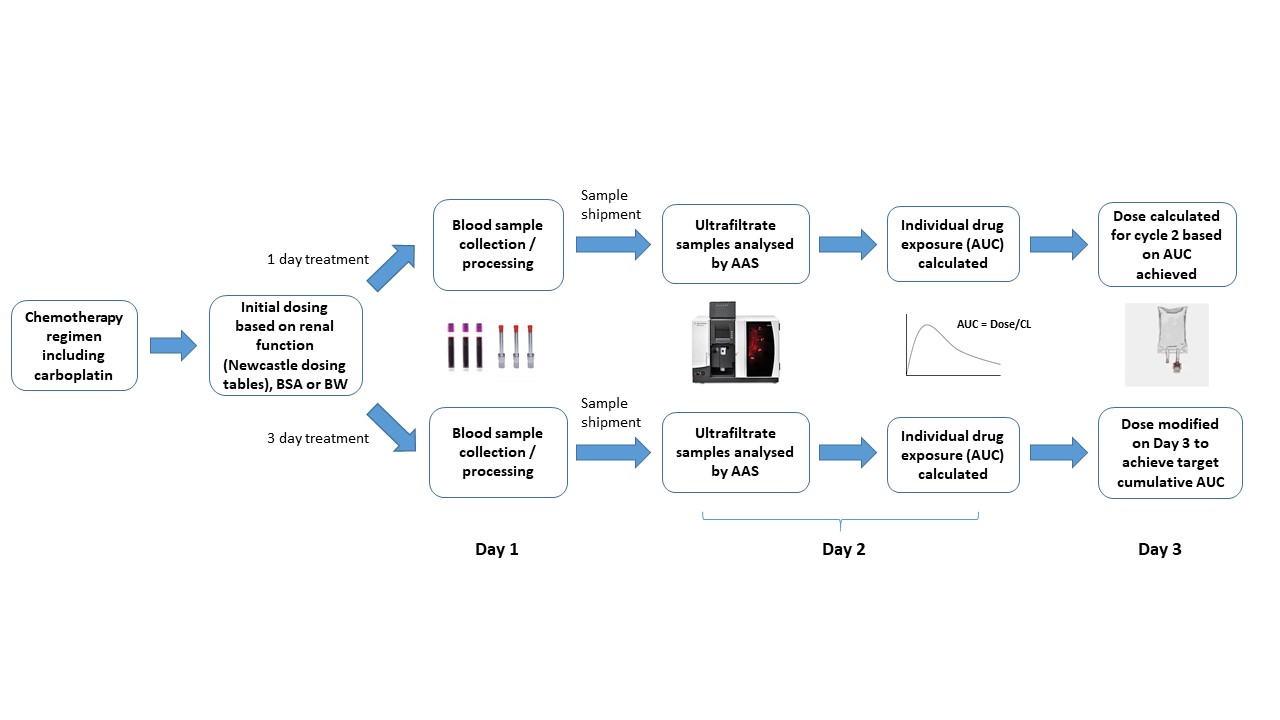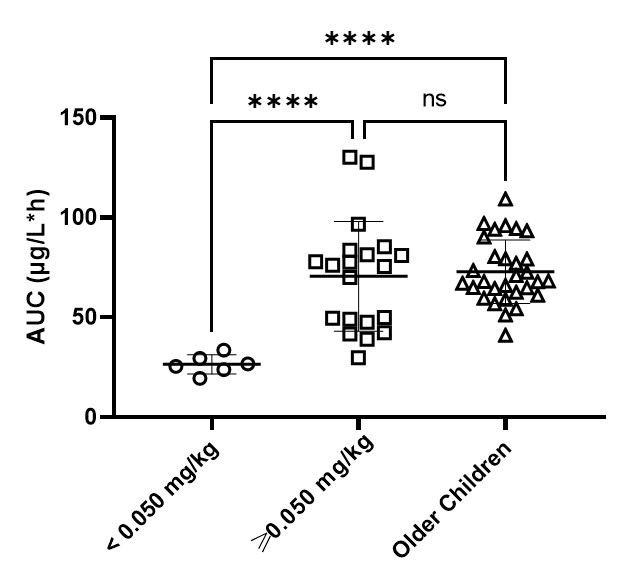B
Grade
Actinomycin D
Some PK studies in children have been published, one including infants. The results on the effect of age on the PK are not consistent.
Level 1
Population PK model including infants
| Author | Method | Number of Patients/Infants(<1yrs) | Age(yr), Median(range) | Age related findings | ||
|---|---|---|---|---|---|---|
| Hill (2014) | Three compartment popPK model. Allometric scaling for BW. | 117 / 9 | 4.6 (0.3-19.8) | Effect of age on PK not discussed. No effect of age on toxicity grade. |
Level 2
PK model including infants or PopPK model without infants
| Author | Method | Number of Patients/Infants(<1yrs) | Age(yr), Median(range) | Age related findings | ||
|---|---|---|---|---|---|---|
| Veal (2005) | Three compartment popPK model | 31 / 0 | 7 (1-20) | Effect of age was not studied. | ||
| Mondick (2008) | Three compartment popPK model.Allometric scaling for BW. | 33 / 0 | NS (1.6-20.3) | No age related effects independent of BW. | ||
| Edwards (2012) | Three compartment popPK model.Allometric scaling for BW. Age was included as covariate on V1. | 36 / 0 | NS (1.6-20.3) | Age was included as covariate on V1, indicating a lower V1, corrected for BW, in older patients. |
Level 3
Non-compartmental PK study or PK model without infants
| Author | Method | Number of Patients/Infants(<1yrs) | Age(yr), Median(range) | Age related findings | ||
|---|---|---|---|---|---|---|
| Skolnik (2021) | Non-compartmental pharmacokinetics | 53 / 4 | NS (0.46-16.7) | Variability in t1/2, AUC and CL was high in children <1 years. The median AUC for children <1 years was approximately 50% lower than for older children (relatable to the more than twofold higher BSA-normalized dose in children ? 1 year. Dose did not appear to be related to AUC and CL corrected for BSA did not appear to be related to age. |
Level 5
Mechanism-based reasoning or expert opinion
| Author | Method | Number of Patients/Infants(<1yrs) | Age(yr), Median(range) | Age related findings | ||
|---|---|---|---|---|---|---|
| Balis (2017) | Mechanism-based development of dose bands based on BSA intervals | NA | NA | NA |


